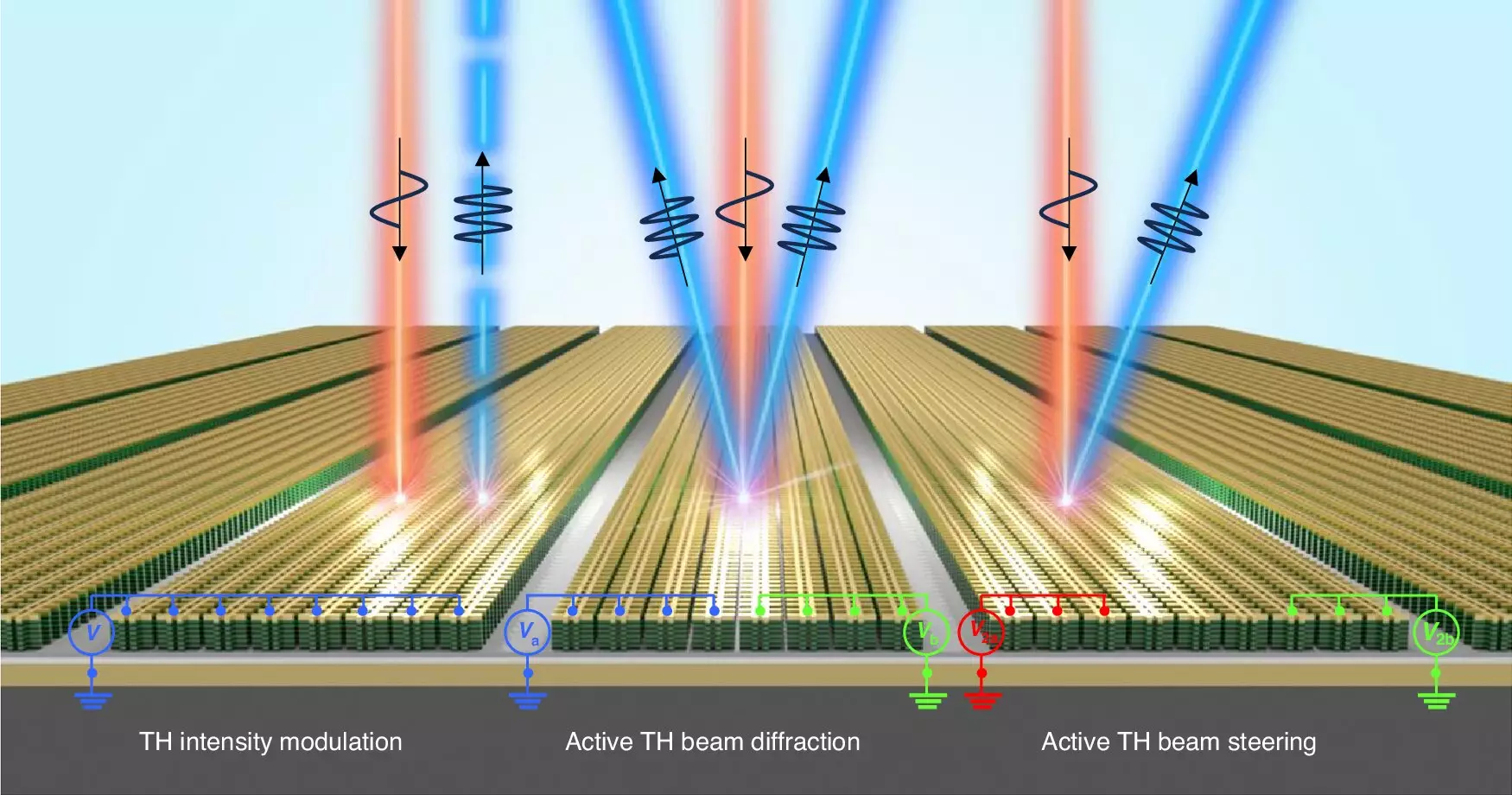Recent advancements in nonlinear optical metasurfaces herald a new era in optical technology. Researchers at UNIST, spearheaded by Professor Jongwon Lee, have made significant strides in creating nanoscale structures that manipulate light in unprecedented ways. These innovations are not just academic milestones; they promise to fundamentally reshape communication technologies, paving the way for enhanced quantum light sources and advanced medical diagnostics. The scaling of these technologies to sub-wavelength structures is particularly noteworthy, as it opens up possibilities for ultra-compact devices that could revolutionize various applications.
The research team has achieved remarkable results with their electrically tunable third-harmonic generation (THG) via an intersubband polaritonic metasurface. This novel approach involves the integration of multiple quantum wells (MQWs), culminating in a modulation depth of 450% for the THG signal along with an impressive 86% suppression of unwanted diffraction. This level of control over light is unprecedented, especially when considering the ability to exceed 180 degrees in local phase tuning. The implications of such control are vast, from dynamic beam steering capabilities to the potential for creating flat nonlinear optical elements that can be easily adjusted.
Nonlinear optics, the field that studies how light and matter interact to produce multiple wavelengths from a single source, is poised for transformation. By leveraging the unique properties of their optical metasurface, Professor Lee’s team is setting the stage for more efficient information transmission compared to traditional single-wavelength lasers. The practicality of this technology is encapsulated in its potential to create thin, lightweight laser devices that are as malleable as paper, highlighting an attractive avenue for miniaturization in optical instruments.
Traditionally, achieving electrical control in nonlinear optical devices has proven difficult. However, this new metasurface technology represents a significant improvement, allowing for easy modulation through voltage applications. The breakthrough also includes novel techniques for voltage-controlled second-harmonic generation (SHG), moving the field forward markedly. The ability to independently adjust the intensity and phase of the THG signal is particularly revolutionary, enabling intricate manipulation of light properties—an advancement that could have profound implications for myriad applications.
The potential applications of this technology are vast, reaching into realms such as cryptography, holography, and next-generation quantum sensors. As articulated by Professor Lee, achieving unprecedented control over light through electrical means opens new avenues for practical applications in quantum communication and other light-modulation tasks. Researcher Seongjin Park emphasizes that the unique optical properties of their metasurface arise from the sophisticated combination of semiconductor layers and metal structures, hinting at a deep interplay of materials science and optical engineering.
The groundbreaking research conducted by Professor Lee and his team signifies a major leap forward in nonlinear optics, and its ramifications could redefine our approach to light manipulation and its applications, stimulating further exploration and innovation in the field.


Leave a Reply